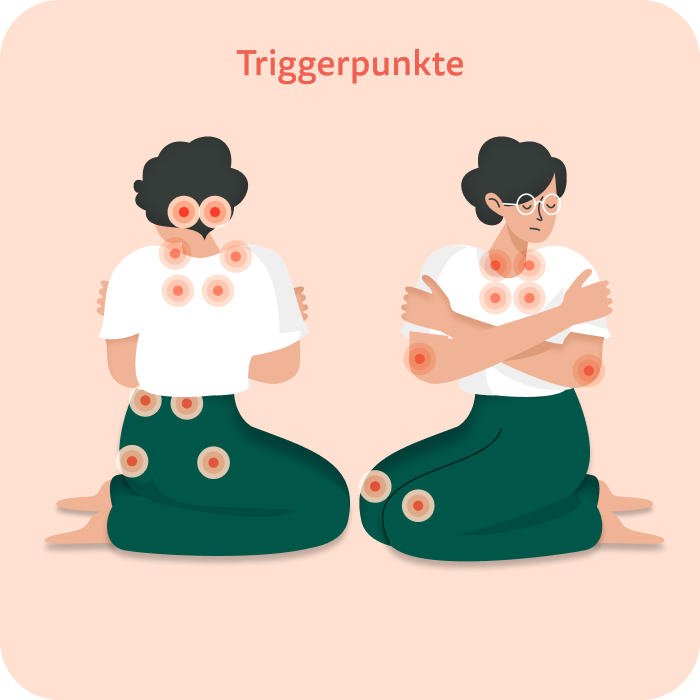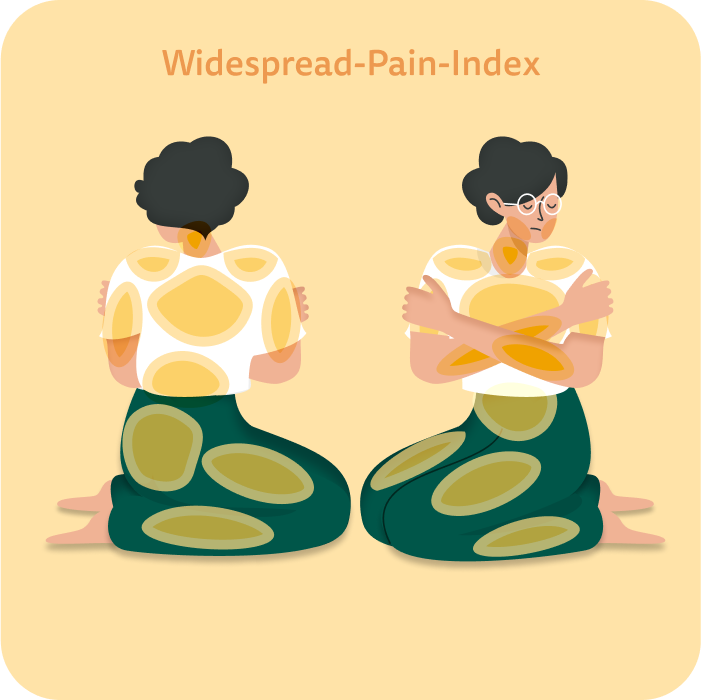
What is Fibromyalgia?
Fibromyalgia is a chronic disease that causes pain throughout the body. Those affected who live with fibromyalgia sometimes suffer greatly from the disease and many find the treatment frustrating. This is partly because the causes of the disease are unfortunately not yet fully understood. A lot of research deals with fibromyalgia and there are already numerous hypotheses. But no hypothesis has so far been able to confirm the complete causes and symptoms of the disease and so there is still no way to completely cure the disease.
What are the symptoms of fibromyalgia?
With fibromyalgia, those affected primarily suffer from pain that can occur in different areas of the body. These are examined with so-called tender points or trigger points. You’ll find out more about this soon.
In addition, many sufferers have sleep problems and are exhausted during the day. There are also numerous other symptoms that can be associated with fibromyalgia. These include, for example:
- Difficulty concentrating
- Stomach pain and heartburn
- Nausea and indigestion
- Headache and dizziness
- Depressive symptoms and depression in fibromyalgia
- Itching and rashes
Would you like free psychological support? We’ll send you all the information you need now. Email*
What are the so-called trigger points in fibromyalgia?
The term trigger points refers to clearly defined points in the area of various joints that can be painful when pressure is applied. To examine the trigger points, a doctor applies pressure to these parts of the body with his finger and those affected express whether the touch is painful or not. A total of 18 trigger points were identified in the joint area. The graphic shows where these are.

In the past, the tender point examination was often used to diagnose fibromyalgia. According to the old diagnostic criteria from 1990, at least 11 of 18 points on examination had to be painful to make the diagnosis.
It is now clear that such trigger points also occur in other diseases, so examining them cannot make a reliable diagnosis of fibromyalgia. Tender points are therefore rarely used to make a diagnosis today.
How is the diagnosis made?
Since 2010, there have been newly defined criteria for checking and making the diagnosis of fibromyalgia. They replace the 1990 criteria and the examination of trigger points in fibromyalgia as the main criterion.
In the new criteria from 2010, your doctor will go through a symptom and questionnaire with you in which the main symptoms of fibromyalgia are checked. First, the so-called “widespread pain index” is determined. Similar to the Tender Points from 1990, different areas of the body are determined to determine how painful they are. However, this concerns larger areas, such as the entire shoulder girdle or the entire thigh. So it’s not about special smaller points at the height of the joints as before. In total, those affected indicate whether they have been painful in the last week for 19 body regions covering the entire body.

In addition to the painful areas of the body, the severity of the symptoms of fatigue , poor sleep and exhaustion is assessed. In addition, many other symptoms that can be associated with fibromyalgia are queried. In the end, a total is determined from the number of painful areas and the number of other symptoms, from which the diagnosis and severity can then be determined. Through this updated diagnosis and the inclusion of additional symptoms typical of fibromyalgia, the complex clinical picture is better taken into account and symptoms are recorded more precisely.
The treatment of fibromyalgia thought differently
The disease has been known and recognized since the 1990s. Nevertheless, those affected repeatedly experience that their complaints are not taken seriously. Both those affected and those treating them often experience the treatment of fibromyalgia as frustrating. Since the disease cannot be cured, it is worth thinking outside the box.
One psychotherapeutic treatment option that has often proven helpful in this case is acceptance and commitment therapy (ACT). Worries and fears as well as everyday stress also affect the experience of pain. With the help of ACT you can learn to develop a more accepting attitude towards your pain and thereby improve your quality of life. This also includes training mindfulness and focusing on your own values in life. This can help you realign your life with what is really important to you and change your perception of pain.
Improve how you deal with pain?
Living with pain can be incredibly stressful and present you with challenges in your everyday life. Learning to better deal with your illness can also reduce your pain levels in the long term. The digital health application (DiGA) HelloBetter chronic pain , which is based on acceptance and commitment therapy, can provide you with targeted support.
Feel free to read here what Tanja (30), as a chronic pain patient, reports about her experiences with HelloBetter chronic pain .
An online therapy course awaits you, which will accompany you within 12 weeks to improve your quality of life with your chronic illness. Through mindfulness and focusing on yourself and your inner values , you will learn to give your life a direction again and to shape your everyday life in a self-determined manner. DiGA can easily be prescribed to you by a doctor or psychotherapist and your health insurance company will cover 100 percent of the costs. Curious? Feel free to take a look at our course page and gain a new perspective on your life.
13 may 2019
